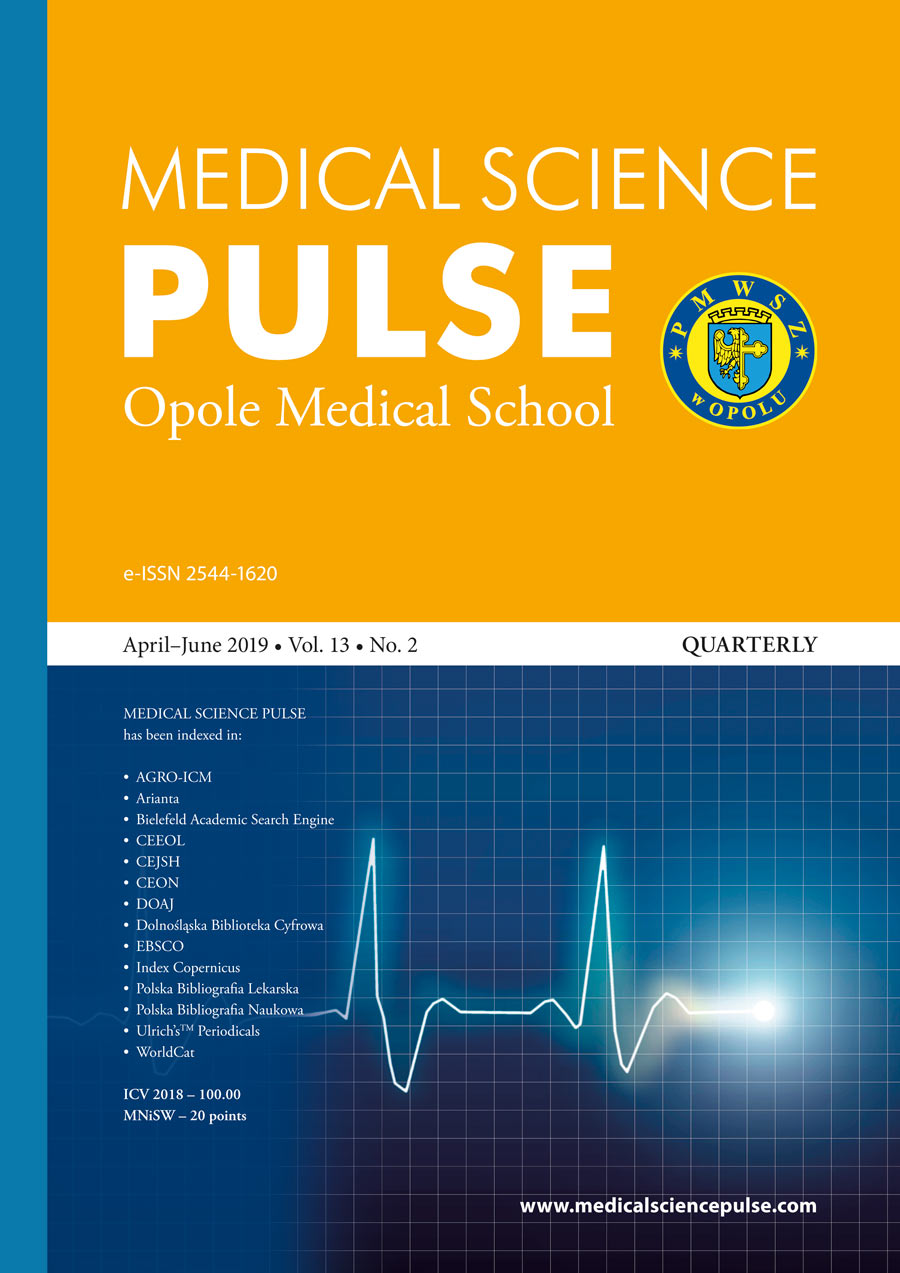Is upper gastrointestinal bleeding still a life-threatening condition?
Is upper gastrointestinal bleeding still a life-threatening condition?
Author(s): Dariusz Janczak, Paweł Marschollek, Karol Marschollek, Marcin Owczarzak, Wojciech Bąkowski, Katarzyna Bąkowska, Mariusz ChabowskiSubject(s): Health and medicine and law
Published by: Państwowa Medyczna Wyższa Szkoła Zawodowa w Opolu
Keywords: gastrointestinal hemorrhage; endoscopy; peptic ulcer; esophageal and gastric varices
Summary/Abstract: Background: Upper gastrointestinal bleeding is a common clinical problem and one of the main reasons for emergency hospitalization. It is associated with an overall mortality rate of 2% to 13%, despite advances in medical therapy. First-choice management is conservative treatment with endoscopic hemostasis. Aim of the study: The aim of the study was to examine the epidemiological and clinical characteristics of patients with upper gastrointestinal bleeding with a focus on the course of hospitalization based on the etiology Material and methods: A retrospective study was conducted in the Department of Surgery at the 4th Military Teaching Hospital in the years 2011–2016, comprising a total of 200 hospitalizations. 150 (75%) of the study group were men, and the mean age was 63.6±15.8 years. Results: Patients most frequently presented with melena (n=105; 53.1%) and hematemesis (n=79; 40%) or coffee ground vomiting (n=57; 28.7%). . 138 (69%) of hemorrhages were managed with endoscopic hemostasis, and in 43 (21.5%) of cases conservative treatment was adequate. In 12 (6%) of cases, laparotomy was the first-choice therapy and in 7 (3.5%) cases, surgery was performed after an attempt at endoscopic treatment had failed. The sources of bleeding were: gastric ulcer – 58 (29%), duodenal ulcer – 48 (24%), esophageal varices – 31 (15.5%), gastric tumor – 15 (7.5%), Mallory-Weiss syndrome – 10 (5%), and Dieulafoy’s lesion – 3 (1.5%). 16 (8%) of the hospitalizations were fatal. Conclusions: Upper gastrointestinal bleeding still has a high mortality rate (8%). It more frequently affects men and the elderly. Gastric and duodenal ulcers are the most common etiologies of bleeding. Esophageal varices and neoplasms are also a significant source of bleeding. Despite the progress in the pharmacological treatment of peptic ulcers, the complications resulting from gastrointestinal bleeding continue to be a serious clinical problem.
Journal: Medical Science Pulse
- Issue Year: 13/2019
- Issue No: 2
- Page Range: 18-23
- Page Count: 6
- Language: English

